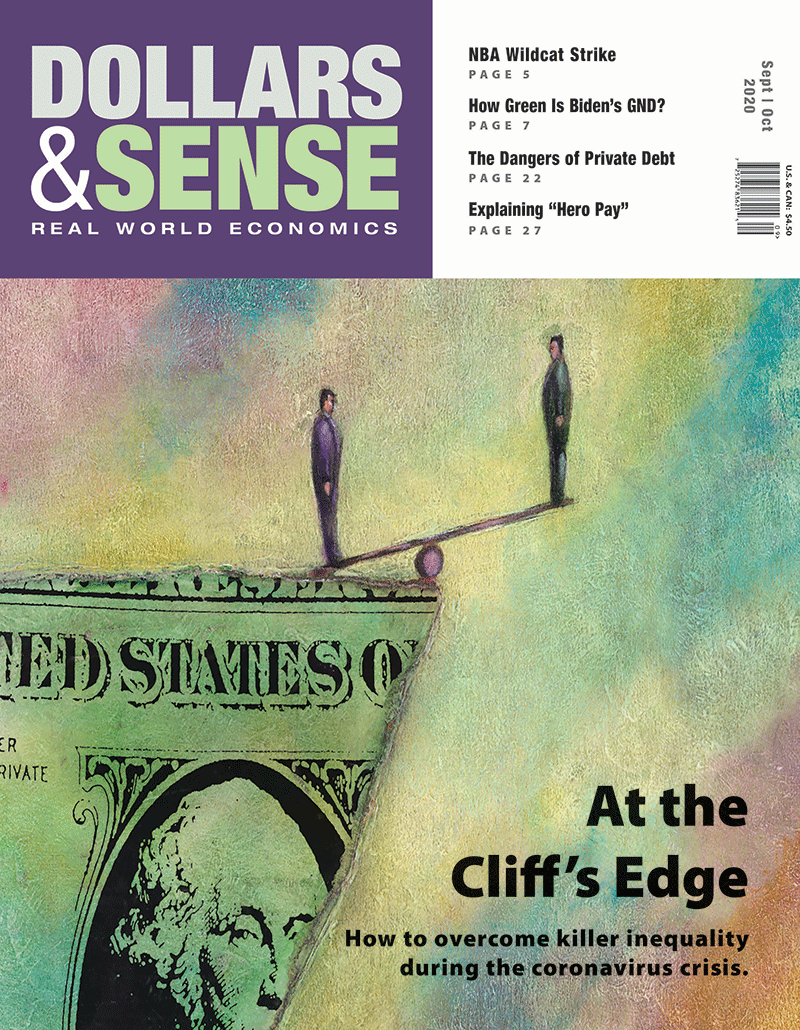Economists, the Trump Tariffs, and Alternatives
One should not jump from the condemnation of Trump’s tariffs by economists (and others) to an acceptance of free trade as a key to economic progress.

Our September/October issue is at the printers and has been sent to digital subscribers! Here's the p. 2 editors' note:
This issue’s two other features delve into the precariousness of U.S. workers in more detail. Journalist Julian Jacobs looks at the huge overhang of private debt that is likely to make the economic crisis worse, especially for low-income workers who are more likely to have high levels of household debt. And economist David McClough’s examination of “hero pay”—the way private employers are supposedly rewarding essential workers in the pandemic—shows how those wage increases, which are as temporary as the public pandemic aid, have to be understood in the context of employers’ power over workers. As long as workers’ income is linked to employment, and employers are able to keep government from providing alternatives, workers will remain on the edge.
Reuss proposes solutions to workers’ economic subordination, as a way of de-linking income from employment, de-linking access to basic goods from income, and de-linking employment and wages from capitalist profits. The workers’ movement should demand job security guarantees, a guaranteed annual wage, direct government benefits (instead of routing them through employers), direct employment (e.g., through a federal job guarantee), and workers’ control of production (via worker-owned and -managed co-ops). All these demands have historical precedent, and many of them have been on the political agenda recently (and in the pages of Dollars & Sense).
Such demands are anathema to capitalists and their politician and media allies, which is as it should be, since they threaten their power. The organizing and actions that would make it possible to achieve these demands are the subject of a future installment of Reuss’s ongoing series, “Coronavirus, Capitalism, and the Workers’ Movement.”
But in this issue’s Active Culture, journalist Abdul Malik shows what it might take, in his account of the recent brief wildcat strike by NBA players and its spread to several other North American professional sports leagues. The strike was in direct response to the shooting of Jacob Blake in Kenosha, Wis., but it’s important to appreciate that this strike was not just symbolic: it built on years of organizing, from Colin Kaepernick to Black Lives Matter, and the spread of the strike to other leagues, including Major League Baseball, Major League Soccer, and the Women’s NBA, shows that this was about workers’ power. As Malik puts it: “... the fundamentals of what led to this moment—a problem, management’s inability to address this problem, difficult conversations on the shop floor, and a flashpoint that led to a total work stoppage—are repeatable in every workplace and in every sector.”
This is the kind of organizing and action that could allow U.S. workers to leap from the edge of the cliff, and safely arrive on the other side of the chasm, where we can enjoy an economy that is beyond inequality and economic subordination.
Also in this issue: John Milleron Joe Biden’s version of the Green New Deal, Steve Pressman’s review of Emmanuel Saez and Gabriel Zucman’s latest book, and more!